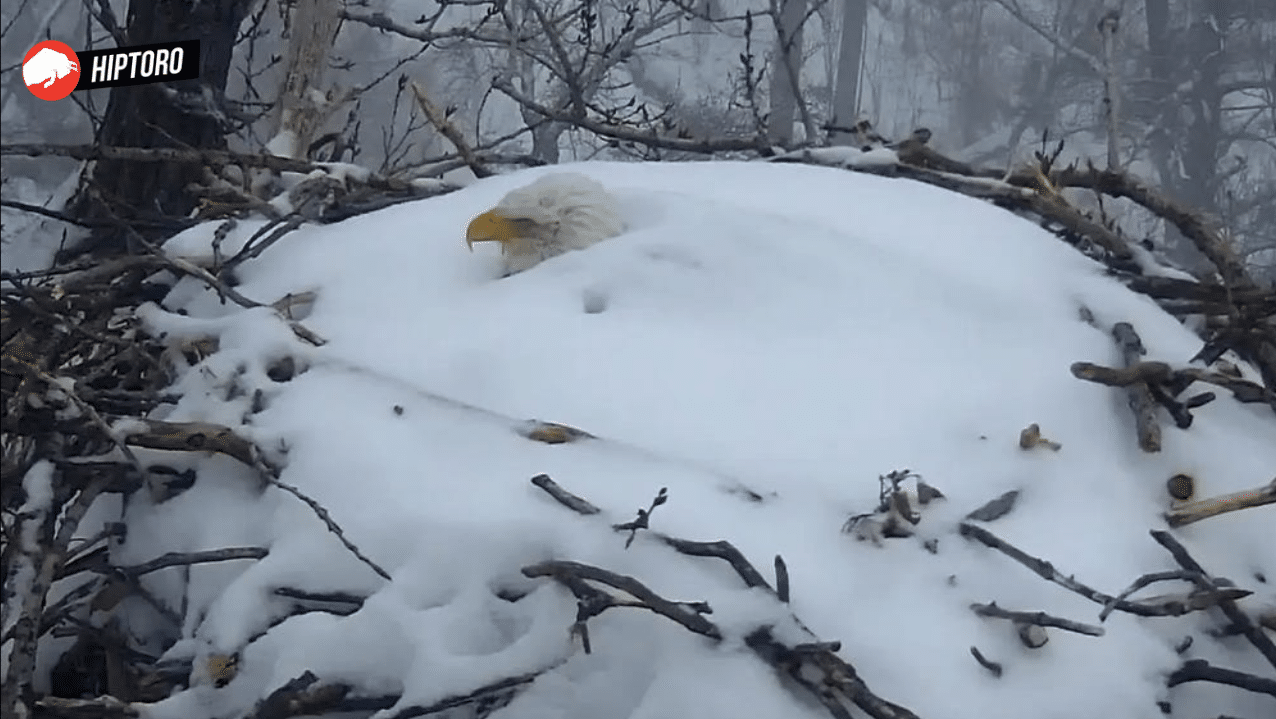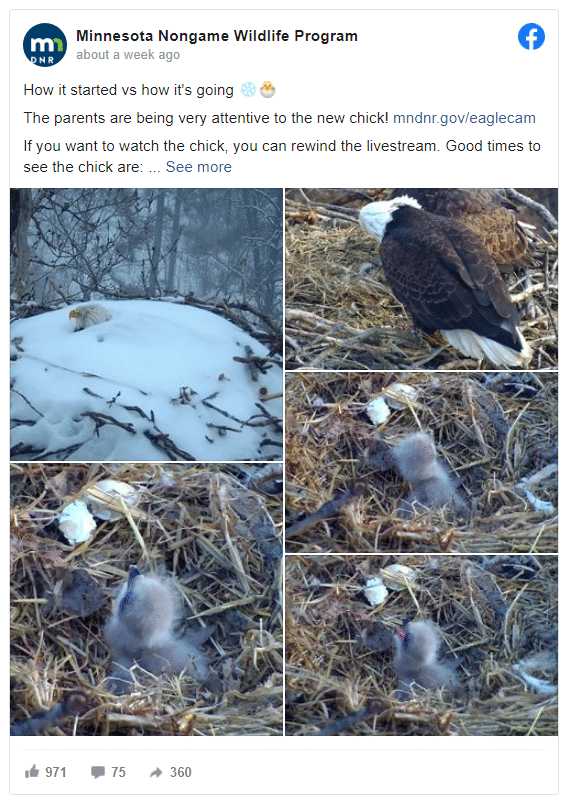A bald eagle that worked diligently to protect its eggs during the winter storms, even refusing to move as snow piled on top of it, lost its baby chick after its 2,000-pound nest fell to the ground on Sunday.
The Minnesota Department of Natural Resources revealed on Facebook that the chick, born on March 26, was discovered dead on Sunday after a few hours of searching.
Facebook post about the bald eagle
The Minnesota eagle family came to public notice after one of the bald eagles was discovered partly buried under a mound of snow, with only its head poking out, as it stayed in its nest and waited out a storm to keep its two eggs warm.
The male and female incubated the eggs alternately, while the male also supplied food and kept an eye out for possible threats or predators.
One of the eggs had broken on March 1, leaving a solitary egg to hatch at the end of the month. It perished a week later.
Officials said they were unclear how the nest fell in the first place but that a blizzard the day before caused an accumulation of snow that was too heavy for the tree branch that held the nest.
“The branch was dead and the nest was over 20 years old and weighed over 2,000 pounds,” the state’s DNR wrote in a Facebook post. “In the area and neighborhood near the nest there were many fallen trees and branches from the heavy, wet snow.”
The DNR stated that even if the bald eagle parents locate another nest, it is unlikely that they will deposit another egg this year.
“Even if they have an alternate (which is likely, eagles tend to build multiple nests in the same area for this exact reason) our nesting season is too short for them to have another brood,” the DNR wrote in an update post on Monday.
However, because eagles are territorial, it is possible that the couple will attempt to rebuild a nest in the same location. Officials revealed on Monday that the couple had already been seen mating.
“Eagles mate for many reasons, including bonding. So this is a good sign that the pair’s bond is strong,” the DNR wrote.
Baby eagle survival rates are typically very poor. According to the US Fish and Wildlife Service, eagles die at a rate of more than 50% during their first year of existence, and only one out of every ten eagles survive to become adults.
In recent years, bald eaglets have perished for a variety of reasons, including hypothermia and nest collapses.










